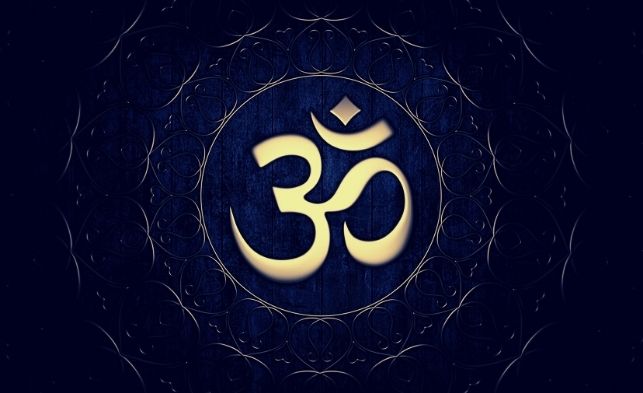Introduction
In this series, Yogic terminologies will be taken up and their -
a. Etymological analysis,
b. Lexical descriptions and
c. Textual occurrences in Yogic literature and their commentaries, as available, will be presented. And finally observations will be made on the references.
Three texts - Yogasūtra, Haṭha-yoga-pradīpikā and Bhagavad-gītā are consulted for textual occurrences portion.
Śabda-yoga is intended to help students, teachers, and professionals of Yoga to develop a sound grammatical, contextual, and thereby an authentic and immersive understanding of Yoga terminologies.
Analysis of Yogic Term
शब्द - Śabda
Etymology
शब्द+ घञ् = शब्दः
śabda+ ghañ = śabdaḥ
- The root is śabda to mean शब्दाविष्कारे śabdāviṣkāre – manifestation of sound, to utter
- The suffix is ghañ is used in the sense of bhava – the act. This suffix is added as the grammatical rule भावे bhāve (aṣṭādhyāyī 3.3.18)
Hence the derivative statement would be शब्द्यते इति शब्द – śabdyate iti śabda the act of manifesting sound.
Lexicon
There are three references from amarakośa for the term śabda
1. रूपं शब्दो गन्धरसस्पर्शाश्च विषया अमी 1.5.7.–
rūpaṃ śabdo gandharasasparśāśca viṣayā amī
Here the word Śabda is listed among the objects of the senses (sense of hearing)
2. अपभ्रंशोऽपशब्दः स्याच्छास्त्रे शब्दस्तु वाचकः - 1.6.2
apabhraṃśo'paśabdaḥ syācchāstre śabdastu vācakaḥ
Apabhraṃśa & Apaśabda are words that indicate words that are wrong. Scripturally and textually correct words are called as śabda.
3. शब्दे निनादनिनदध्वनिध्वानरवस्वनाः - 1.6.22.
śabde ninādaninadadhvanidhvānaravasvanāḥ
Nināda, ninada, dhvani, dhvāna, rava, svana are the synonyms for śabda
The sense that these three lexical references give is – śabda is object of hearing, it also denotes the proper grammatically formed word, and also sound.
Textual Occurrences
Yogasūtra
There are three references to the word Śabda in this text.
1. शब्दज्ञानानुपाती वस्तुशून्यो विकल्पः ॥ १.९॥
śabdajñānānupātī vastuśūnyo vikalpaḥ .. 1.9..
śabdajñānānupātī is the expression to be noted here. Vikalpa or imagination is stated as a knowledge that follows only from words and does not have any corresponding (real) objects (in the world).
2. तत्र शब्दार्थज्ञानविकल्पैः संकीर्णा सवितर्का समापत्तिः ॥ १.४२ ॥
tatra śabdārthajñānavikalpaiḥ saṃkīrṇā savitarkā samāpattiḥ .. 1.42 ..
savitarkā samāpattiḥ is defined as a state of mind where there is an imaginary admixture of śabda –word, artha – object and jñān – knowledge.
3. शब्दार्थप्रत्ययानामितरेतराध्यासात्संकरस्तत्प्रविभागसंयमात्सर्वभूतरुतज्ञानम् ॥ ३.१७ ॥
śabdārthapratyayānāmitaretarādhyāsātsaṃkarastatpravibhāgasaṃyamātsarvabhūtarutajñānam .. 3.17 ..
This verse also speaks of the admixture of the words, object and the knowledge of any object and by doing saṃyama (dhāraṇā, dhyāna, samādhi) on the mutual distinctness of words, object and the knowledge – the knowledge of calls of all living beings will arise.
Bhagavdgita
There are five references to the word Śabda in this text.
1. ततः शङ्खाश्च भेर्यश्च पणवानकगोमुखाः ।
सहसैवाभ्यहन्यन्त स शब्दस्तुमुलोऽभवत् ॥ १.१३ ॥
tataḥ śaṅkhāśca bheryaśca paṇavānakagomukhāḥ .
sahasaivābhyahanyanta sa śabdastumulo'bhavat .. 1.13 ..
This verse from the opening chapter speaks about the tumultous sound (śabda)that arose from the simultaneous blowing of the conches, beating of drums etc in the war field
2. श्रोत्रादीनीन्द्रियाण्यन्ये संयमाग्निषु जुह्वति ।
शब्दादीन्विषयानन्य इन्द्रियाग्निषु जुह्वति ॥ ४.२६ ॥
śrotrādīnīndriyāṇyanye saṃyamāgniṣu juhvati .
śabdādīnviṣayānanya indriyāgniṣu juhvati .. 4.26 ..
The offering of the words etc (the objects of the senses) into the senses that are in the form of Agni is described here. śrīśaṅkarabhagavatpāda and Ācārya ānandagiri clarify that becoming free from passion and hatred and offering the words and other objects of the senses (experiencing the respective objects of the senses), which are not proscribed by the Śāstras, in the senses is what is intended here. In the process of describing jñānamayayajña – yajñas in the form of knowledge (which are superior to the material yajñas) – the above yajña by the Indiryas is described.
3. पूर्वाभ्यासेन तेनैव ह्रियते ह्यवशोऽपि सः ।
जिज्ञासुरपि योगस्य शब्दब्रह्मातिवर्तते ॥ ६.४४॥
pūrvābhyāsena tenaiva hriyate hyavaśo'pi saḥ .
jijñāsurapi yogasya śabdabrahmātivartate .. 6.44..
The expression śabdabrahma is used here. It is stated here in that a person who desires to explore and understand Yoga shall transcend the (relatively ephemeral) outcomes of the Vedic Karmas (śabdabrahma).
4. रसोऽहमप्सु कौन्तेय प्रभास्मि शशिसूर्ययोः ।
प्रणवः सर्ववेदेषु शब्दः खे पौरुषं नृषु ॥ ७.८॥
raso'hamapsu kaunteya prabhāsmi śaśisūryayoḥ .
praṇavaḥ sarvavedeṣu śabdaḥ khe pauruṣaṃ nṛṣu .. 7.8..
“I am the sound in the ether” says Lord Kṛṣṇa in this verse. The how of the statement of previous verse in the text (7.7) “Everything is woven into me” is elucidated by this verse. According Vedic ontology, sound is the substratum of element ether. Hence if Lord Kṛṣṇa is the sound, ether is established in sound and in ether everything else is established. Hence by this flow of thought, the statement “Everything is woven into me” is explained.
5. बुद्ध्या विशुद्धया युक्तो धृत्यात्मानं नियम्य च ।
शब्दादीन्विषयांस्त्यक्त्वा रागद्वेषौ व्युदस्य च ॥ १८.५१ ॥
buddhyā viśuddhayā yukto dhṛtyātmānaṃ niyamya ca .
śabdādīnviṣayāṃstyaktvā rāgadveṣau vyudasya ca .. 18.51 ..
In the last chapter of the text, in the context of this verse it is stated that the very high state of knowledge (jñānasya niṣṭhā) is attained by having a clear intellect, by controlling oneself (from taking the path of carnal desires) with the great courage, by shunning the objects of the senses like the sound etc (śabdādīnviṣayān) and by overcoming passion and hatred.
Haṭhayogapradīpikā
There are six references to the word śabda in this text. They are as follows –
1) गोशब्देनोदिता जिह्वा तत्प्रवेशो हि तालुनि ।
गोमांसभक्षणं तत्तु महापातकनाशनम् ॥ ३.४८॥
gośabdenoditā jihvā tatpraveśo hi tāluni .
gomāṃsabhakṣaṇaṃ tattu mahāpātakanāśanam .. 3.48..
‘Gośabda’ is the expression found here. In the previous verse it was stated ’गोमांसं भक्षयेत्’ – one should eat the meat of the cow. To clarify that “eating of cow meat” should not be taken literally, in this verse it is clarified that the word go/cow (Gośabda) should be understood to mean the tongue (jihvā) and the entry of the tongue into the cavity of the palate region is called as eating the meat of the cow. It is to be noted that this coded discussion is about the Yogic practice khecarī.
2) कुटिलाङ्गी कुण्डलिनी भुजङ्गी शक्तिरीश्वरी ।
कुण्डल्यरुन्धती चैते शब्दाः पर्यायवाचकाः ॥ ३.१०४ ॥
kuṭilāṅgī kuṇḍalinī bhujaṅgī śaktirīśvarī .
kuṇḍalyarundhatī caite śabdāḥ paryāyavācakāḥ .. 3.104 ..
Herein it is stated that the words (śabdāḥ) - kuṭilāṅgī, kuṇḍalinī, bhujaṅgī, śakti, īśvarī , kuṇḍali and arundhatī are synonyms.
3) विष्णुग्रन्थेः ततो भेदात् परमानन्दसूचकः ।
अतिशून्ये विमर्दश्च भेरीशब्दस्तदा भवेत् ॥ ४.७३ ॥
viṣṇugrantheḥ tato bhedāt paramānandasūcakaḥ .
atiśūnye vimardaśca bherīśabdastadā bhavet .. 4.73 ..
Bherīśabda - the sound of the bherī/kettle drum is the expression to be noted here. When the prāṇa pierces the Viṣṇugranthi the sound of the kettle drum will manifest in the throat region. It is to be noted that this is a stage in the practice of nādānusandhāna towards attainment of the Samādhi.
4) रुद्रग्रन्थिं यदा भित्त्वा शर्वपीठगतोऽनिलः ।
निष्पत्तौ वैणवः शब्दः क्वणद्वीणाक्वणो भवेत् ॥ ४.७६ ॥
rudragranthiṃ yadā bhittvā śarvapīṭhagato'nilaḥ .
niṣpattau vaiṇavaḥ śabdaḥ kvaṇadvīṇākvaṇo bhavet .. 4.76 ..
This is a verse similar to the previous one. This speaks of the next stage in piercing the granthis. The granthi that is pierced by prāṇa is rudragranthi – in the region in between the eyebrows. When this happens the sound (śabda) of the lute (vīṇā) will be heard.
5) अनाहतस्य शब्दस्य ध्वनिर्य उपलभ्यते ।
ध्वनेरन्तर्गतं ज्ञेयं ज्ञेयस्यान्तर्गतं मनः ।
मनस्तत्र लयं याति तद्विष्णोः परमं पदम् ॥ ४.१०० ॥
anāhatasya śabdasya dhvanirya upalabhyate .
dhvanerantargataṃ jñeyaṃ jñeyasyāntargataṃ manaḥ .
manastatra layaṃ yāti tadviṣṇoḥ paramaṃ pādam .. 4.100 ..
Anāhatasya śabdasya - is the expression found in this reference. The culmination the practice of nādānusandhāna is stated in this verse where it is stated that by focusing on the dhvani of the anāhata (the unstruck Yogic) sound (śabda) gradually the mind gets absorbed in the indwelling consciousness.
6) तावदाकाशसङ्कल्पो यावच्छब्दः प्रवर्तते ।
निःशब्दं तत्परं ब्रह्म परमात्मेति गीयते ॥ ४.१०१ ॥
tāvadākāśasaṅkalpo yāvacchabdaḥ pravartate .
niḥśabdaṃ tatparaṃ brahma paramātmeti gīyate .. 4.101 ..
As evident from this reference being the subsequent verse to the previous one, the culmination of nādānusandhāna is discussed here also. It has been stated that as long as sound is exists/perceived in the practice (nādānusandhāna) this idea of ether (and the rest of the created world exists). When the sound (of (nādānusandhāna)) falls silent (by higher state of vairāgya), the Brahman which is beyond even the (subtle) sound, gloriously exists.
Observations
From the above references in Yoga treatises consulted here the word śabda is used in at least six different meanings –
- Sounds emanating from various instruments (conch, drum etc)
- the word (used in language to convey ideas)
- the Vedas
- the object of the sense of hearing
- the causal matter of ether
- the unstruck Yogic sound
This range of different meanings and contexts of usage necessitates careful study of the text and the context to derive the correct meaning.
Unit 6 To be Continued…





